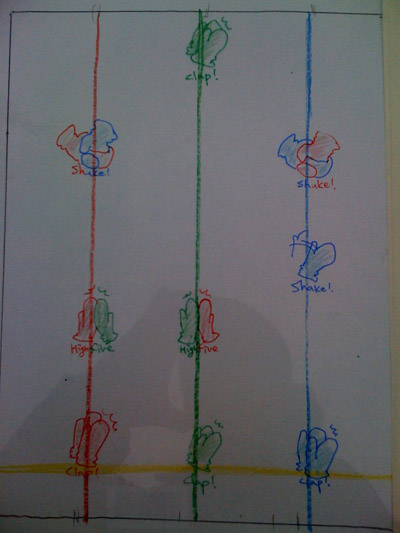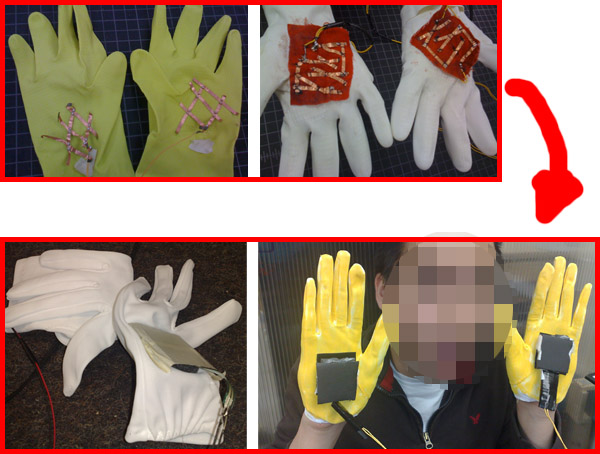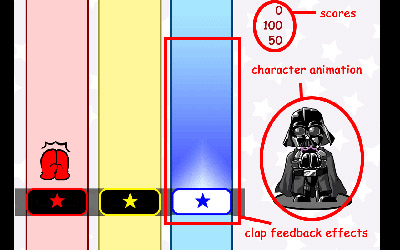











Prototypes
Paper Prototype
The paper prototype consisted of drawn paper gloves and a powerpoint slide with the gloves falling on a screen. This allowed us to see how the game play would be set up and how the glove interactions and hand gestures would occur.
Low Fidelity Prototype
The low fidelity prototype contained a flash video of 15 seconds of the sequence and had physical mittens that could be worn. This prototype helped us to understand the pace and complexity of the game play. It also brought us closer to the development of the gloves. We could see how easy/difficult it is to execute hand gestures with these gloves.
Prototype 1

Paper+OHP film
This prototype consisted of a menu navigation system to choose between 3 songs for game play. The game play was still done as a video and the corresponding music for the game play was working. The game play was very complex and consisted of many hand gestures that are now not included such as back hand claps. We hooked up the copper wire circuit sensor on a set of cleaning gloves. This allowed us to get basic game play.
Prototype 2

Physical Gloves for prototype.
This prototype modified the game play from a video and sound file playing at the same time to a sequence loader which allowed a variety of songs (given the correct encoding) to be played very easily. This got us closer to possibly developing a library of playable songs. Also, we began initial developments of a versus (3vs3) mode and a director mode (allowing players to record their own sequence to play later on). In terms of hardware, the new gloves were costume gloves with large FSR sensors connected to the gloves and a piece of foam to enhance pressure detection. This got us closer to developing gloves capable of detecting hand gestures very accurately.
Prototype 3

Actual play screen
This prototype added the director mode into the game. New sequences were loaded into the game which allowed for 3 songs to be played. In terms of the hardware, one aspect the user study determined was the flimsy and fragile nature of the FSR sensors. Because of this, prototype 3 had foam board covering many portions in an attempt to stabilize the sensors from too much movement during hand gestures.